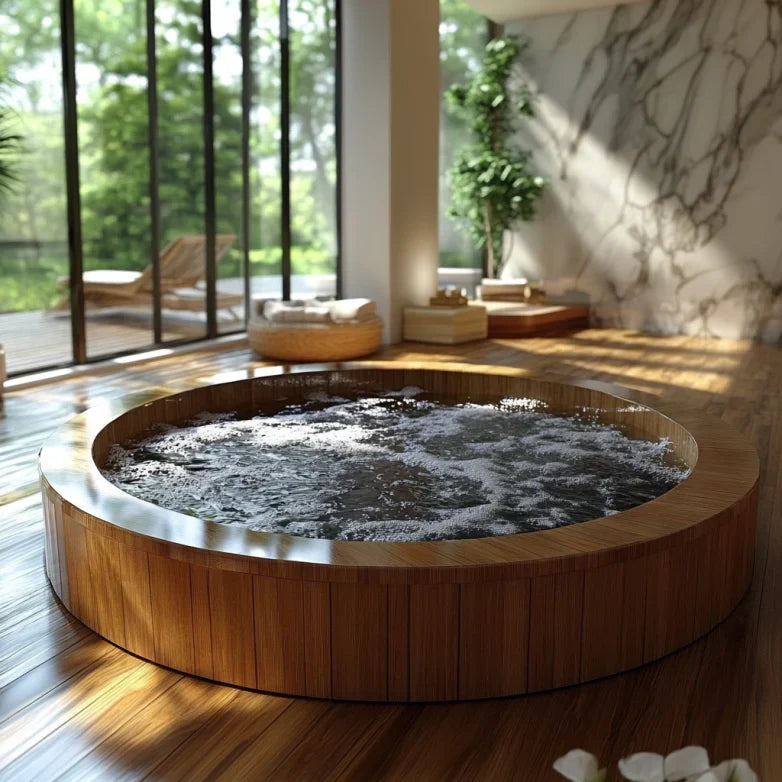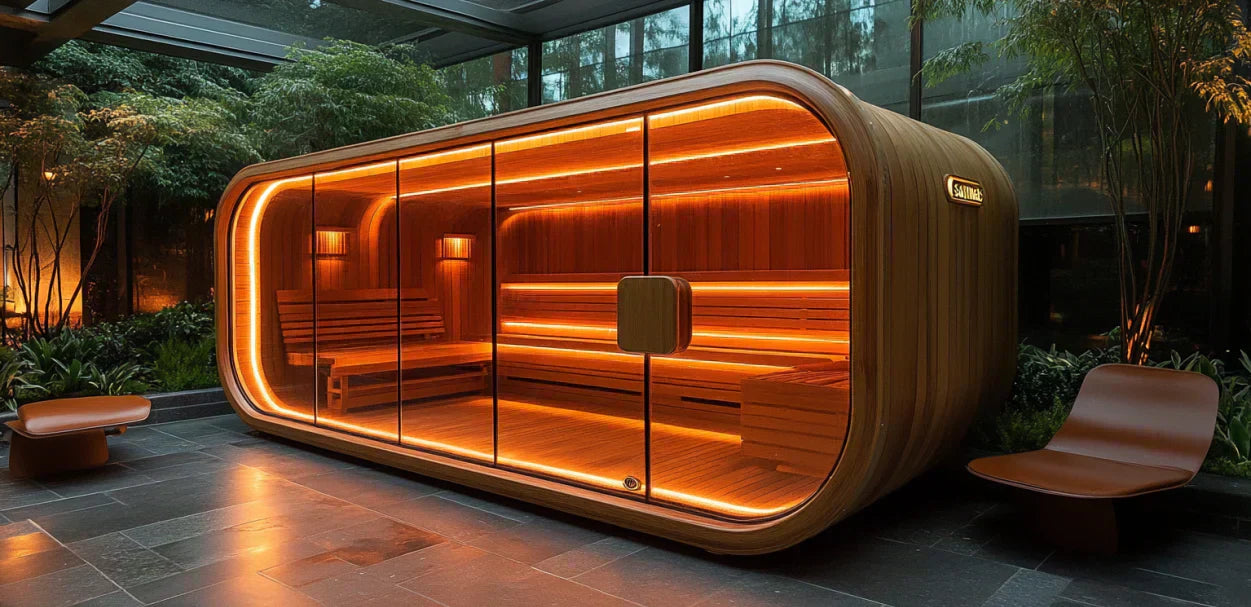25+ NEW Science-Backed Benefits of Sauna & Cold Plunges


Curious why anyone would willingly endure a sauna and cold plunge routine? It sounds intense – almost like self-imposed punishment – yet its popularity continues to grow.
The reason is simple: science shows it works. How exactly? Well, we have distilled the most compelling evidence to show why this temperature contrast therapy might be the most powerful health hack hiding in plain sight.
Top 6 Scientific Benefits Of Sauna & Cold Plunges (Editor’s Picks)
We’ve pulled together standout stats and facts from the latest scientific benefits of sauna & cold plunge. Here are 6 you’ll definitely want to see.
|
1 |
3–5 contrast cycles of sauna and cold plunge improve recovery |
|
2 |
In sauna + cold therapy, cold exposure of 11 minutes/week is enough |
|
3 |
Athletes use 2–3 minute hot-cold intervals for recovery |
|
4 |
Sauna sessions raise heat shock proteins by 48% |
|
5 |
Keep sauna sessions between 12–15 minutes and cold plunges under 5 minutes. |
|
6 |
Cold exposure lowers stress hormones 12 hours after the immersion |
The Synergistic Power of Heat & Cold: Why Contrast Therapy Amplifies Benefits
If you've been chasing better recovery and mental clarity, you might be overlooking nature's most powerful wellness tool. The sauna and cold plunge combination creates physiological magic by switching between temperature extremes, triggering benefits in your circulation, hormones, and immune system that last long after your session ends.
3–5 contrast cycles of sauna and cold plunge improve recovery (Virgin Active)

Alternating between hot and cold 3 to 5 times after a workout can help muscles recover faster. The repeated temperature shifts improve blood flow and reduce inflammation.
Contrast therapy activates circulation more aggressively than standard cardio (Healthline)
Shifting between a hot sauna and a cold plunge rapidly opens and tightens blood vessels. The extreme temperature difference flushes blood through the body at a speed unmatched by most endurance workouts.
In sauna + cold therapy, cold exposure of 11 minutes/week is enough (Mito Health)

When combined with regular sauna sessions, only 11 total minutes of cold plunge exposure per week are needed to see benefits. Short, repeated sessions are more effective than long single plunges.
Keep sauna sessions between 12–15 minutes and cold plunges under 5 minutes (Plunge)
For safe and effective contrast therapy, stay in the sauna for 12 to 15 minutes, then limit cold plunges to 5 minutes or less. This balance helps you get the benefits without overloading your system.
Sauna sessions raise heat shock proteins by 48% (ScienceDirect)

Using a sauna several times a week triggers a nearly 50% increase in heat shock proteins. These proteins help repair damaged cells and support overall resilience.
40% decrease in all-cause mortality in consistent sauna users
People who used a sauna at least 4 to 7 times per week had a 40% lower risk of dying from any cause compared to those who used it once a week. The research followed participants for up to 20 years, showing long-term health benefits tied to consistent sauna use.
Water conducts temperature 23x better than air, pulling heat from the body more quickly (CTM Magnetics)

Because water conducts temperature much more efficiently than air, it pulls heat from the body far more quickly. That’s why cold water feels much more intense than cold air at the same temperature.
Cold immersion can boost metabolic rate by 350% (BreakThrough Physical Therapy)
When you’re submerged in cold water, your body ramps up energy use to stay warm. This leads to a dramatic spike in metabolic rate, up to 3.5 times higher than normal.
Traditional sauna temperatures range from 150°F to 195°F

Dry saunas usually maintain temperatures between 150 and 195 degrees Fahrenheit. It’s this intense heat that supports benefits like detox, stress relief, and cardiovascular activation.
Heat adaptation from sauna use boosts blood plasma levels (Runner’s Blueprint)
With regular sauna use, the body increases its blood plasma volume as part of its cooling system. This change supports better endurance and helps regulate heart rate and blood pressure.
30 minutes in a 75°C sauna may reduce baseline blood pressure by 15%

Over time, repeated sauna sessions at this temperature led to a significant 15% decrease in resting blood pressure. This effect is likely due to improved circulation and relaxation of blood vessels.
Heat acclimation was greater from hot baths than hot workouts (ScienceDirect)
Surprisingly, soaking in hot water produced stronger heat adaptation effects than working out in hot conditions. Participants showed better thermal tolerance and cardiovascular efficiency.
Cold exposure increases brown fat activity and improves insulin response (National Institutes of Health)

Regular exposure to mild cold helps the body activate brown fat, which burns energy and pulls glucose from the bloodstream. This natural response improves how the body handles insulin, especially in people with reduced sensitivity.
People who used saunas regularly had 2x fewer colds in a 6-month trial
Participants who used saunas regularly experienced just half the number of colds compared to those who didn’t. The researchers pointed to possible benefits like improved circulation and immune response.
90.3% of cold exposure users do it in the morning (Pursue Performance)
Most people who use cold exposure prefer to do it at the start of their day. Morning sessions are often tied to increased energy and focus, which may explain the timing choice.
Cardiovascular Benefits Of Sauna And Cold Plunge
Heart rate can reach 150 BPM during a sauna session

A hot sauna doesn’t just relax you—it also boosts your heart rate, sometimes up to 150 beats per minute. That’s comparable to what you’d see during a moderate cardio session.
48% reduced risk of fatal heart disease with 4-7 weekly sauna sessions
Regular sauna bathing transforms heart health by dilating blood vessels and boosting circulation, providing cardioprotective effects that rival prescription medications.
Frequent sauna use lowers pneumonia risk by 41% (FoundMyFitness)

People who took saunas 4 or more times a week had a 41% lower risk of getting pneumonia compared to those who used them only once a week. The consistent heat exposure may help improve lung function and immune response.
Powerful Hormonal Responses from Cold Plunge
Cold exposure leads to lower stress hormones 12 hours later

Studies show that stress hormones fall well below baseline levels about 12 hours after cold immersion. The initial stress response fades and gives way to a calming, restorative effect.
Longer cold exposure boosts norepinephrine by 530% (Examine)
Immersing the body in cold water for several minutes triggers a sharp rise in norepinephrine, which helps increase alertness and energy. The spike can reach 530%, showing how strongly the body reacts.
Cold plunges can raise dopamine levels by 250% (npr)
Spending just a few minutes in cold water causes dopamine levels to surge by up to 250%. This sharp rise is linked to improved focus, mood, and mental clarity.
Benefits Of Sauna & Cold Plunge For Athletes
Cold water therapy helps athletes recover faster by easing soreness and inflammation (Mayo Clinic Health System)

Cold water helps calm inflammation and slow nerve activity, which leads to less soreness after workouts. It's one of the most research-backed recovery methods available.
Cold water immersion for athletes works best between 8°C and 15°C (Springer Nature)
Most recovery protocols for athletes use water temperatures in this range, with 10°C being the most studied. These temperatures are cold enough to reduce muscle soreness without risking numbness or overexposure.
Ice baths can lower muscle temperature by up to 12°C after exercise
This significant temperature reduction alters exercise muscles' metabolic activity, blood flow, and inflammatory responses for extended periods.
Hot-cold hydrotherapy helps clear muscle enzymes quickly
Alternating between warm and cold water can reduce the buildup of muscle damage markers. It’s a recovery method often used to feel better faster after intense workouts.
Athletes use 2–3 minute hot-cold intervals for recovery (ScienceDirect)

Many athletes alternate between hot and cold exposure in 2–3 minute intervals to speed up muscle recovery. The quick switch in temperature may improve circulation and reduce soreness after intense workouts.
Cold plunging after exercise enhances post-workout sleep (Urban Ice Tribe)
Taking a cold plunge after intense activity can improve sleep quality by promoting relaxation and reducing inflammation. This helps the body recover more efficiently overnight.
How Do You Start Sauna And Cold Plunge Therapy As A Beginner?
According to health and fitness experts, you should always begin with the sauna and finish with the cold plunge. This sequence mimics contrast therapy principles and maximizes the benefits by:
- Triggering your body's fight-or-flight response
- Enabling natural thermoregulation
- Releasing norepinephrine naturally
- Creating an optimal adrenaline and endorphin rush
Here’s how to go about it:
Step 1: Hydrate
- Drink 1-2 glasses of water
- Avoid alcohol before sessions
Step 2: Sauna (Start with 10-15 minutes)
- Enter the sauna
- Sit comfortably and relax
- Breathe normally
- Exit if you feel dizzy or uncomfortable
Step 3: Cool Down Transition
- Step out of sauna
- Take a few deep breaths
- Prepare for cold exposure
Step 4: Cold Plunge (Start with 30 seconds to 1 minute)
- Option 1: Cold shower - gradually turn the temperature down
- Option 2: Step into cold water slowly
- Stay calm and breathe steadily
- Get out immediately if you feel panic or can't breathe
Step 5: Warm Up
- Dry off with towels
- Let your body warm up naturally
- Drink more water
Conclusion
The sauna and cold plunge ritual is transforming recovery science. This temperature contrast doesn't just feel good—it rewires your neurochemistry, supercharges metabolism, and creates cellular resilience that conventional approaches simply can't match. Start gradually and let biology do the remarkable rest.
Nordvik delivers this life-extending experience without compromise. Our extensive range of saunas and cold plunges provides exact temperature control and superior filtration, ensuring optimal conditions for every session.
FAQ
Are there specific times of day that are best for sauna and cold plunge contrast therapy?
Morning sessions can boost energy and metabolism for the day, while evening sessions (2-3 hours before bed) may improve sleep quality due to the post-session parasympathetic response. Avoid late-night sessions as the initial stimulation might disrupt sleep.
How long should a typical sauna session last before cold plunging?
For beginners, start with 5-10 minutes at lower temperatures (around 150°F). Advanced users typically benefit from 15-20 minutes at 175-195°F. Always listen to your body and exit if you feel uncomfortable or dizzy.
How do I build tolerance for cold water immersion?
Start with 30-second exposures at milder temperatures (around 15°C/59°F) and gradually decrease temperature and increase duration. Consistent practice is key—most people can work up to 2-3 minutes at 10°C after several weeks of regular exposure.
Is it safe to use contrast therapy if I have high blood pressure?
Individuals with controlled high blood pressure may benefit from gradual introduction to contrast therapy, as research shows it can reduce systolic and diastolic pressure over time. However, those with severe hypertension (180/110+) should avoid it until cleared by their physician.



